The Angel Nebula is a reflection nebula located approximately 2,700 light-years away in the equatorial constellation Monoceros (the Unicorn). It is part of Monoceros R2, one of the closest massive star forming regions to the Sun. The nebula has the designation NGC 2170 in the New General Catalogue.
The Angel Nebula is the brightest and westernmost part of the Monoceros R2 giant molecular cloud. The dusty nebula reflects the light of nearby hot stars and contains a compact H II region catalogued as PKS 0605-06 at its centre.
Infrared observations have revealed signs of ongoing star formation in the nebula. The massive young stars are concealed by the thick dust clouds and cannot be seen in visible light, but they shine in the infrared band. Their strong winds and radiation are responsible for shaping the nebula’s dust and gas.
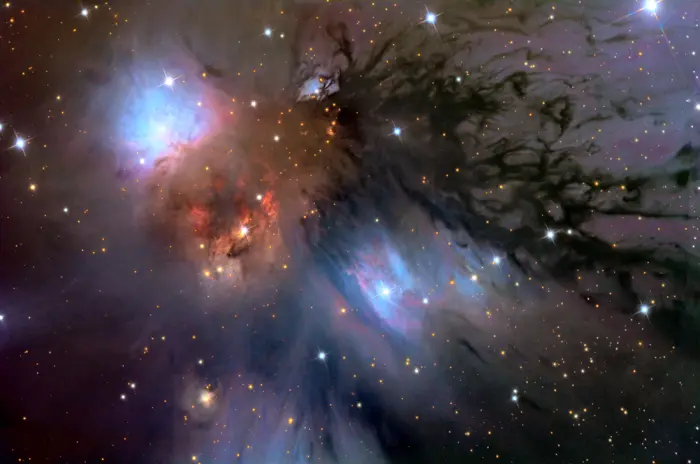
Angel Nebula (NGC 2170), image credit: Adam Block/Mount Lemmon SkyCenter/University of Arizona (CC BY-SA 4.0)
Monoceros R2 is an R association, a stellar association whose members illuminate reflection nebulae. NGC 2170 is one of several bluish reflection nebulae in the region of Monoceros R2. The molecular cloud also contains a compact red emission region and many dark absorption nebulae.
The Angel Nebula is also catalogued as the infrared source Mon R2 IRS3. The infrared source is a massive protostellar system that has been resolved into two components, A and B. The newly formed stars are embedded in their protostellar envelopes and are accreting matter from their parent clouds.
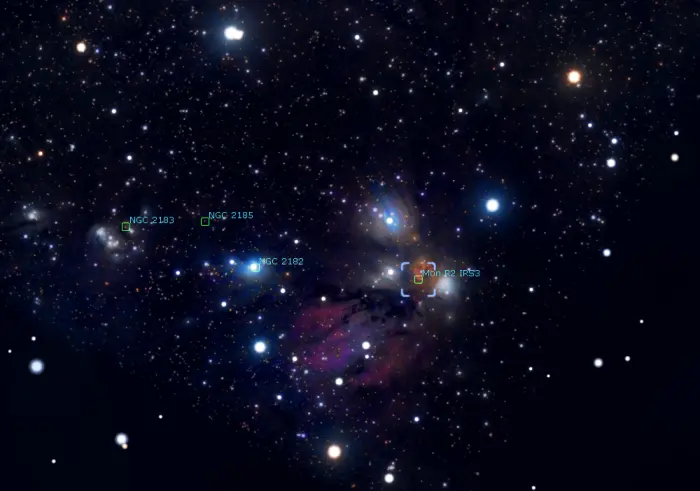
The location of Mon R2 IRS3, image: Stellarium
The infrared source is associated with a bright water maser and one of the brightest OH masers in the sky. Water masers are commonly found in molecular clouds. The bright, intense ones are typically associated with massive protostars. OH masers are typically observed in ultracompact H II regions or are associated with newly formed stars near the edges of very dense material.
The distance to NGC 2170 is uncertain, but most estimates are close to the value of 2,707 ± 163 light-years (830 ± 50 parsecs).
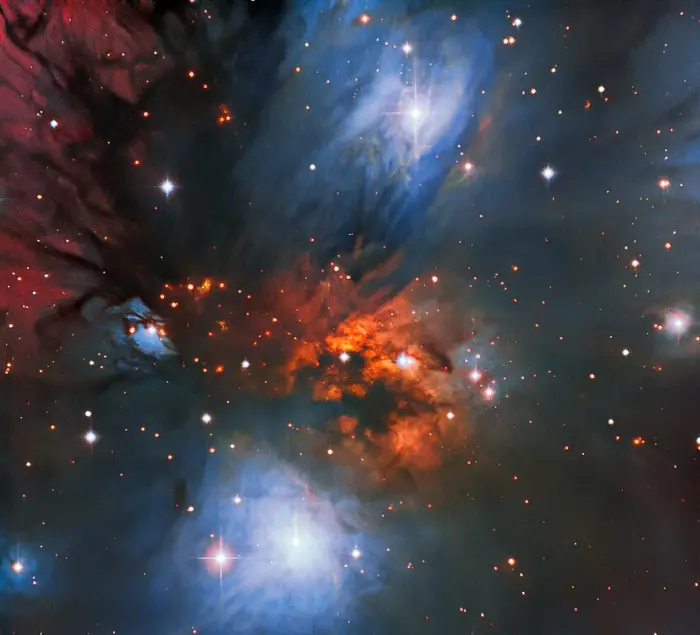
This striking image, streaked with bright swathes of color, captures the beautiful reflection nebula NGC 2170. The diffuse clouds of interstellar dust in the nebula scatter and reflect light from nearby stars, creating this vividly colorful scene. Dust grains reflect blue light from hot stars embedded in the nebula. And warm hydrogen gas glows a deep red. Seen as dark tendrils, dust also absorbs the light from stars and gas behind it. This particular nebula lies in the constellation Monoceros (The Unicorn) — a faint constellation on the celestial equator. It was observed using the SMARTS 0.9-meter Telescope at Cerro Tololo Inter-American Observatory in Chile, a Program of NSF’s NOIRLab. Image credit: CTIO/NOIRLab/NSF/AURA Acknowledgments: Travis Rector (University of Alaska Anchorage), Mahdi Zamani & Davide de Martin (CC BY 4.0)
Facts
The Angel Nebula was discovered by the German-born British astronomer William Herschel on October 16, 1784. Herschel spotted the nebula with his 18.7-inch refractor and catalogued it as IV 19. His son John Herschel catalogued the nebula as GC 1362, and Danish astronomer John Louis Emil Dreyer listed it as NGC 2170 in the New General Catalogue.
The Monoceros R2 region has a total mass of 3.80 x 104 solar masses. The star-forming region also contains the infrared source Mon R2 IRS2, which is the main source of illumination.
Monoceros R2 appears as a string of reflection nebulae that extend across 2.4 degrees of the sky, corresponding to a physical extension of 35 parsecs. The molecular cloud lies 830 parsecs away, almost exactly between the Orion A and Orion B molecular clouds and the Canis Major OB1 association. The Orion molecular clouds lie approximately 400 parsecs away and Canis Major OB1 is 1,200 parsecs away.
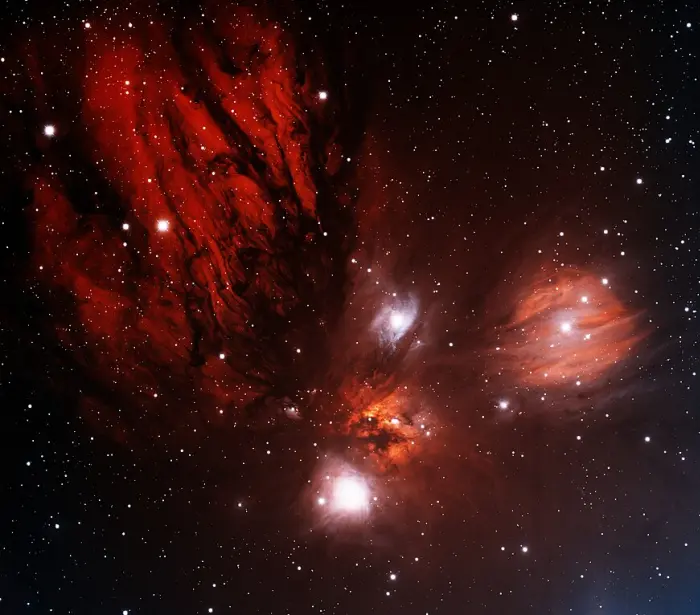
This image was obtained with the wide-field view of the Mosaic II camera on the Blanco 4-meter telescope at Cerro Tololo Interamerican Observatory on January 11th, 2012. It shows a portion of the giant Monceros R2 molecular cloud. It is a location of massive star formation, particularly in the location of the bright red nebula just below the center of the image. The image was generated with observations in the Sulphur [SII] (blue) and Hydrogen-Alpha (red) filters. In this image, north is to the right, and east is up. Image credit: T.A. Rector (University of Alaska Anchorage) and N.S. van der Bliek (NOIRLab/NSF/AURA) (CC BY 4.0)
Location
The Angel Nebula lies in the constellation Monoceros. It appears close to the imaginary line extended from the stars of Orion’s Belt towards Sirius. It can be found near the magnitude 3.96 orange giant star Gamma Monocerotis, one of the brightest stars in Monoceros. The reflection nebulae NGC 2182, NGC 2185, and NGC 2183 appear in the same region.
Monoceros is one of the fainter northern constellations, but it is surrounded by several first-magnitude stars that can be used for orientation. Most of the celestial Unicorn lies within the Winter Triangle, formed by Betelgeuse in Orion with Sirius in Canis Major and Procyon in Canis Minor.
Gamma Monocerotis appears just west of the midpoint of the imaginary line connecting Betelgeuse and Procyon. It is the brightest star in this area. Shining at magnitude 3.96, it does not stand out in the sky, but can be spotted in good conditions. The Angel Nebula itself appears a little less than halfway from Sirius to Bellatrix at the other shoulder of Orion.
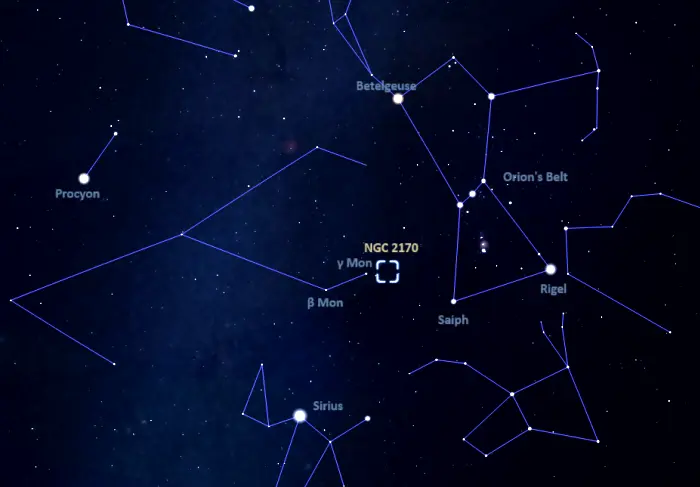
The location of the Angel Nebula (NGC 2170), image: Stellarium
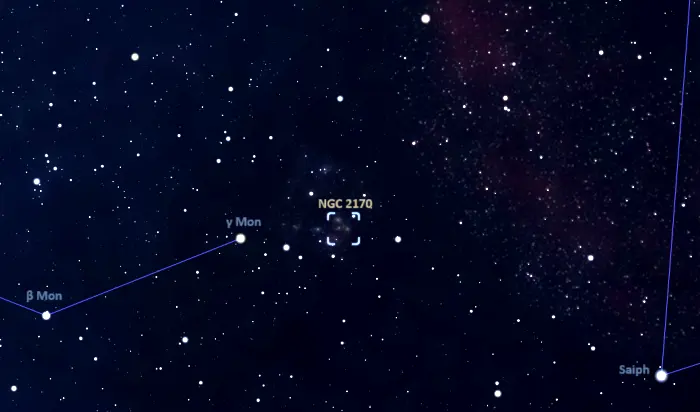
NGC 2710 location, image: Stellarium
NGC 2170 lies only about 6 degrees south of the celestial equator and is visible from virtually anywhere for at least part of the year. It is a challenging target for amateur telescopes and best observed with large instruments. The Monoceros R2 region is a popular target for astrophotographers because it hosts several nebulae in the same wide field of view.
For northern observers, the constellation Monoceros is visible throughout the winter months. The best time of the year to observe the Angel Nebula and other deep sky objects in the Unicorn constellation is during the month of February, when the constellation climbs higher above the horizon in the evening.
Angel Nebula – NGC 2170
| Constellation | Monoceros |
| Right ascension | 06h 07m 48.0s |
| Declination | −06° 23′ 06″ |
| Apparent size | 2.0′ x 2.0′ |
| Distance | 2,707 ± 163 light-years (830 ± 50 parsecs) |
| Names and designations | Angel Nebula, NGC 2170, Cederblad 63 (Ced 63), DG 88, LBN 994, LBN 213.69-12.65, RAFGL 877, Mon R2 IRS3 |
Images
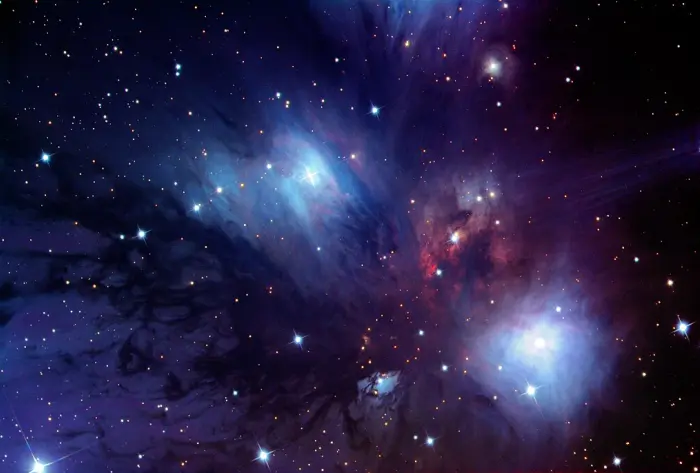
The Angel Nebula (NGC 2170), image credit: Wikimedia Commons/Jschulman555 (CC BY-SA 3.0)
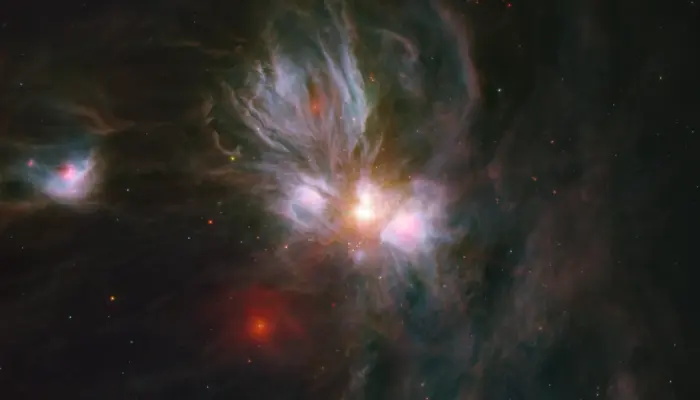
An infrared view of NGC 2170, captured by the Spitzer Space Telescope, image credit: Judy Schmidt (CC BY 2.0)
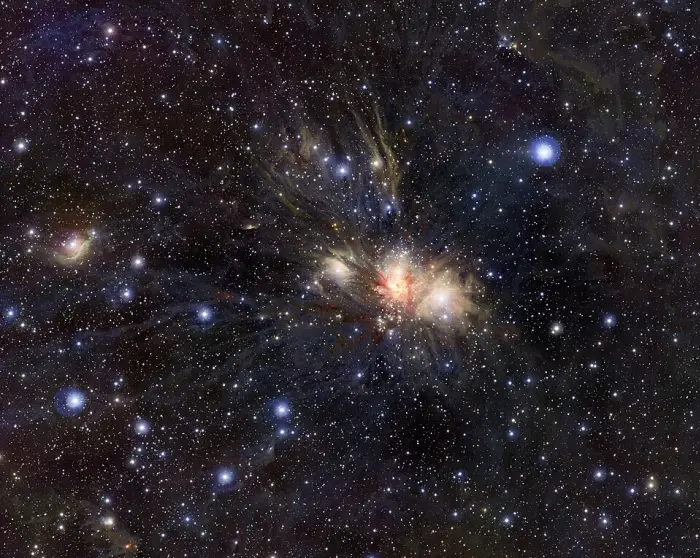
This dramatic infrared image shows the nearby star formation region Monoceros R2, located some 2700 light-years away in the constellation of Monoceros (the Unicorn). The picture was created from exposures in the near infrared bands Y, J and Ks taken by the VISTA survey telescope at ESO’s Paranal Observatory. Monoceros R2 is an association of massive hot young stars illuminating a beautiful collection of reflection nebulae, embedded in a large molecular cloud. Image credit: ESO/J. Emerson/VISTA (CC BY 4.0)
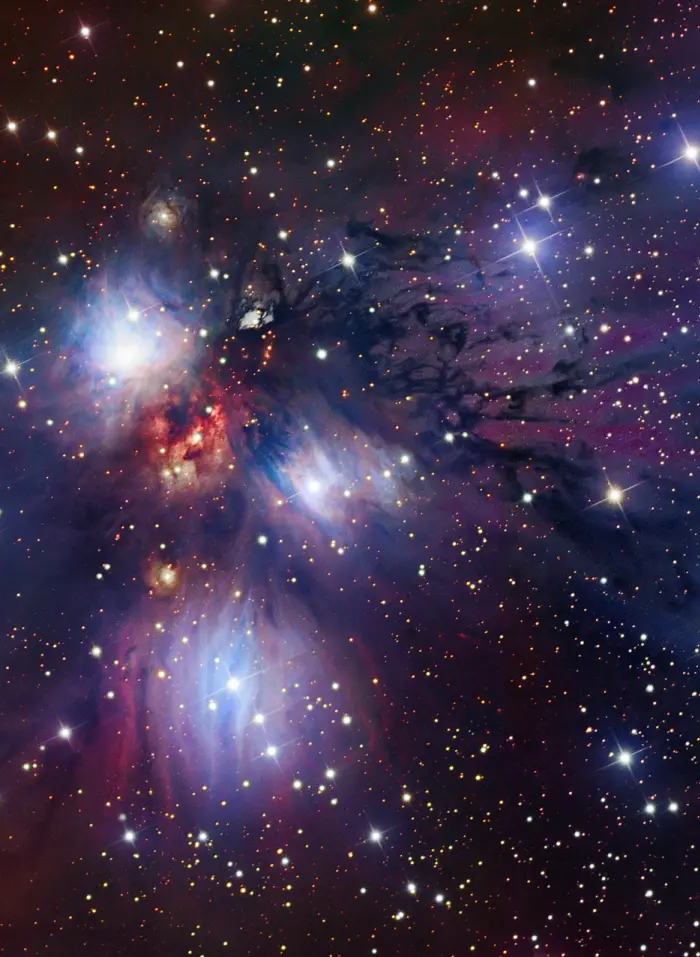
NGC 2710, image credit: ESO, Robert Gendler (CC BY 4.0)
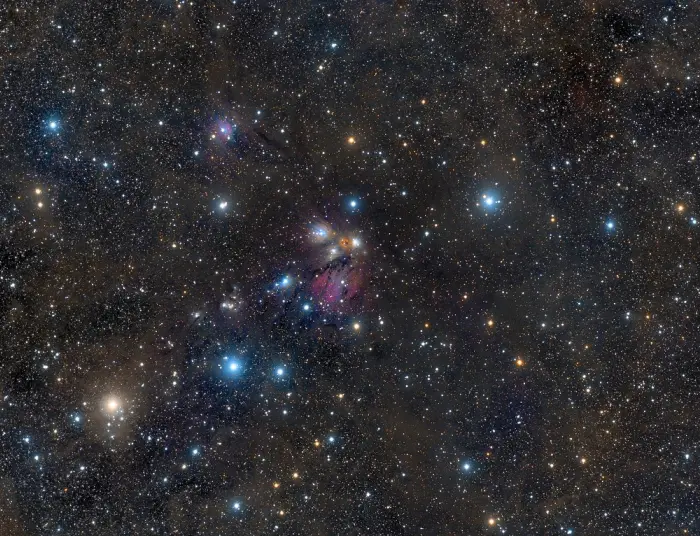
A wide field view of the Angel Nebula (NGC 2170), image credit: Rogelio Bernal Andreo (CC BY-SA 4.0)